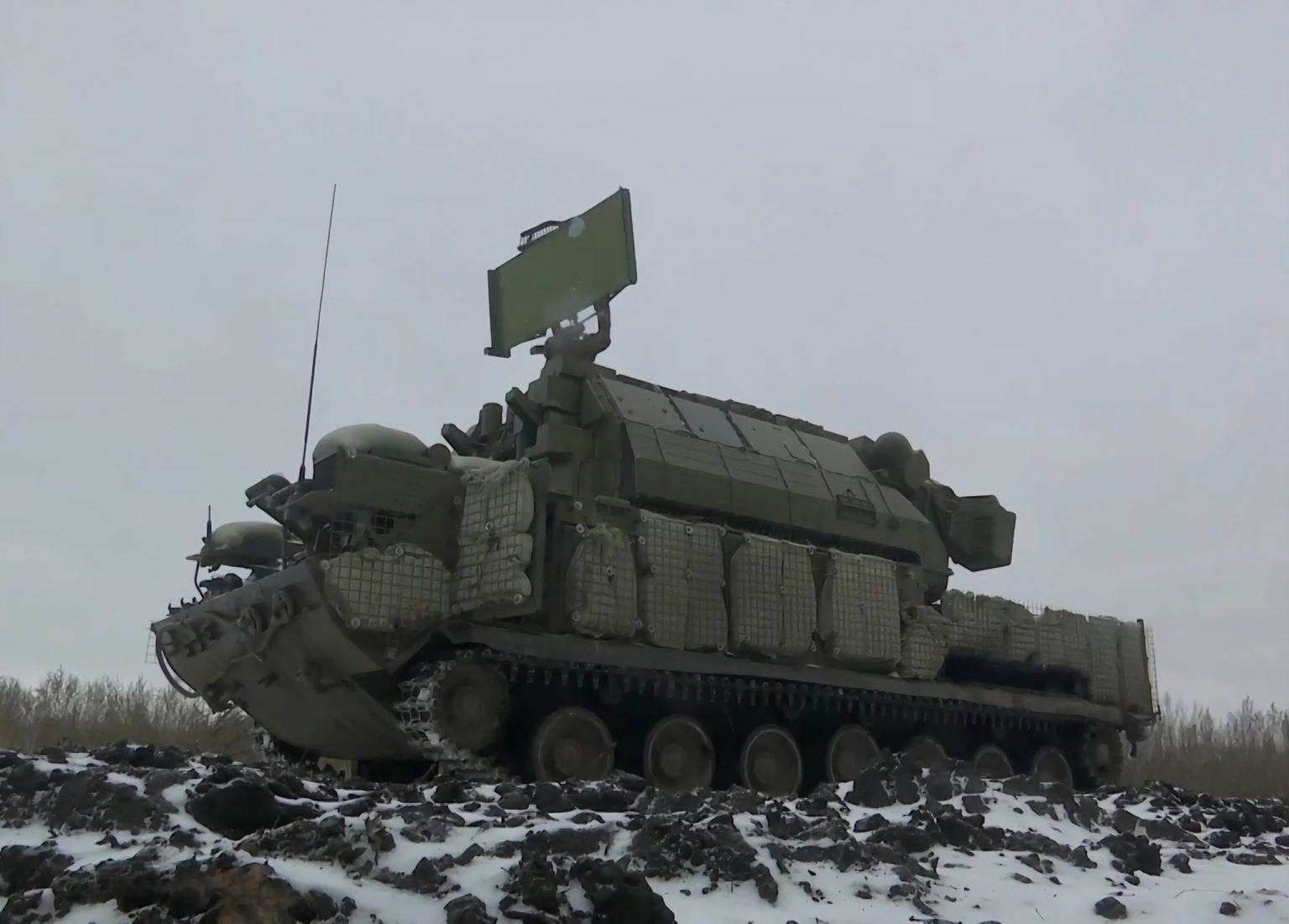Russian units are deploying their own workshops to provide additional protection for their equipment
4 January, 2024 Russian BMP-1 equipped with additional protection. Freeze frame from the video The Russian invasion forces are "on the spot" developing and equipping armored vehicles with FPV drone protection.
Andriy Tarasenko, researcher of armored vehicles, reported on this in his Telegram channel. One of the Russian units, likely a new mechanized unit, has set up a production site, possibly even in a combat zone, where it is developing, testing, assembling, and installing additional protection on armored vehicles. According to the invaders, installation of a full protection "package" on a combat vehicle can take one day.
The video captures the BMP-1 equipped with a Rabitz mesh on the metal frame. Additional protection covers part of the engine and transmission compartment and the top and side projections of the turret.
 A Russian BMP-1 equipped with additional protection. Source: frame from the video
A Russian BMP-1 equipped with additional protection. Source: frame from the video
In addition, the Russians demonstrated the repair of the protection of the guides on the BM-21 Grad multiple-launch rocket system.
They claim that this defense is effectively counteracting threats from Ukrainian FPV drones, and discussed an IFV that survived "a dozen hits." However, it is worth noting that Rabitz mesh protection can protect a combat vehicle from munitions discharge and possibly partially from debris. At the same time, the protection against drones carrying a charge remains questionable, even considering the distance between the mesh and the vehicle's armor.
Militarnyi previously reported that the Russians are equipping their multiple-launch rocket systems and anti-aircraft missile systems with additional protection.
 Tor-M2 air defense system with additional protection. Source: frame from the video of the Russian Ministry of Defense
Tor-M2 air defense system with additional protection. Source: frame from the video of the Russian Ministry of Defense
One of the videos released by the Russian Ministry of Defense captured a Tor-M2 surface-to-air missile system equipped with additional armor protection on the sides in the form of bags, probably filled with sand, soil, or other rock. The bags, in turn, are positioned under the grids.
The additional armor protection is visually executed with precision, which may indicate its factory origin.